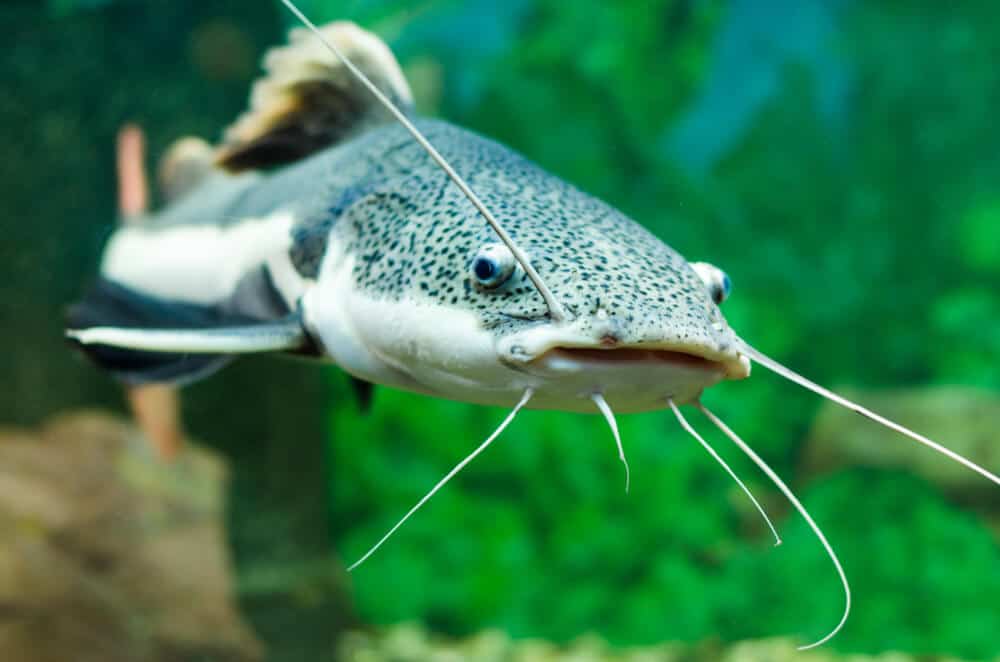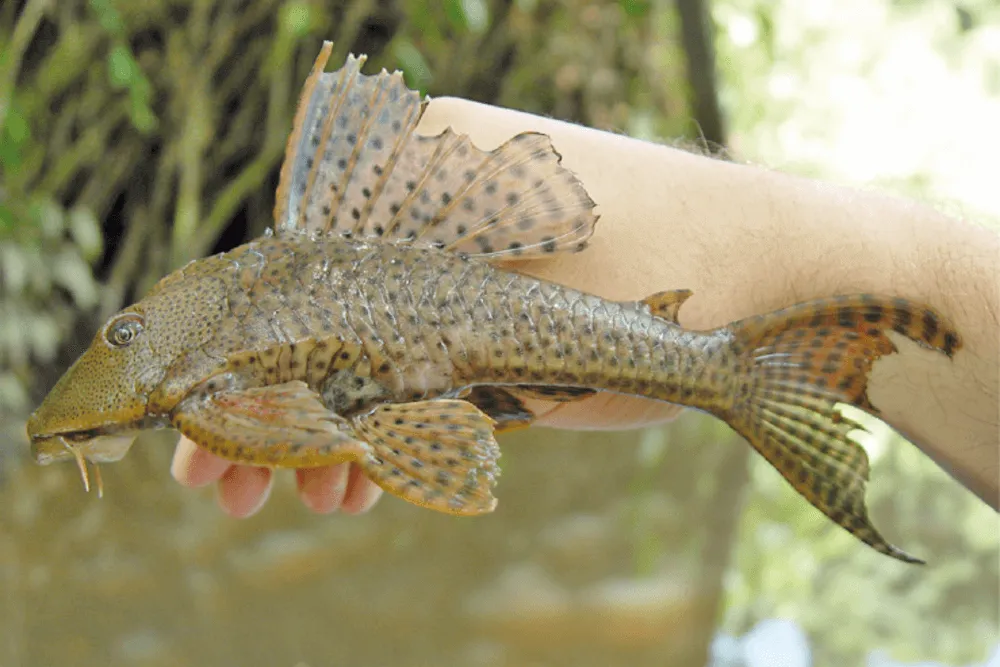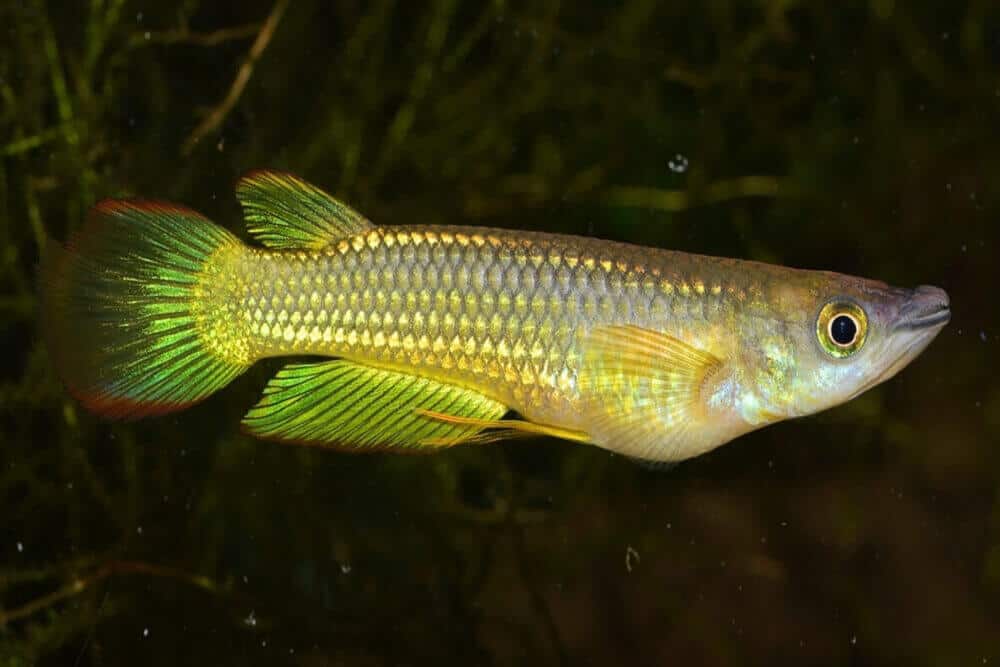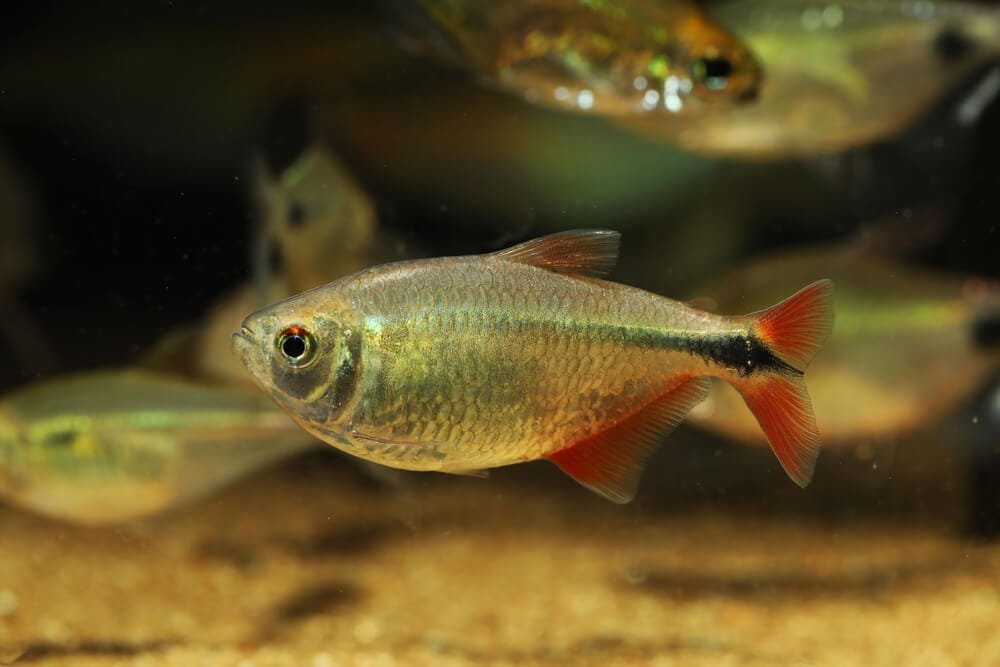Introduction To Red Tail Catfish Care
What are the things that you know about red tail catfish care? If you haven’t learned that much, this article will answer all your questions about redtail catfish.
The redtail catfish is a huge fish species that the most expert fishkeepers should only keep.
It is the only known surviving species of the genus Phractocephalus, which is named after Phractocephalus Hemioliopterus in scientific terms. It’s one of the more opulent-looking catfish found at pet shops.
Here are some helpful pieces of information that will help you take care of your red tail catfish:
Appearance
Redtails are noted for their flattened snouts, protruding whiskers, and their stunning red tail fin and white belly.
Banana catfish, Antenna catfish, flat-nosed catfish, and South American red tail catfish are some of its nicknames.
It is found in South American freshwater river basins like Brazil, Peru, Venezuela, Colombia, and the Amazon.
They grow in vast freshwater bodies with muddy or sandy floors, such as streams, lakes, and rivers.
Because of its rapid development, a redtail catfish can potentially grow up to 5 feet in the wild and 3 feet in ponds or big tanks, making it a high-maintenance fish for fish owners.
Anglers and fishers love them because of their immense size and lovely form.
Expert aquarists like the difficulty and interest of caring for this species, so if you’re looking for a challenge, this might be the fish for you.

Behavior
Redtail catfishes are noted for being fierce and instinctual hunters. They have a cautious demeanor as juveniles, but as they grow older and begin to hunt on smaller fishes, they gain confidence and aggression.
They are swift once they have their sights set on a target due to their predatory instincts.
Red tails could connect to you as a pet after spending some time with you.
These fish like to swim around the aquarium, so plenty of swimming room is required, and as they develop, you’ll need to move your redtail catfish to a larger tank, if not a pond.
Since they are nocturnal, low lighting will be beneficial.
Maintenance
It is relatively difficult to take care of redtail catfish because the most pressing worry is ensuring that the tank is large enough to accommodate their rapid growth.
Since the redtail catfish is among the most enormous freshwater creatures and the only one of its kind, planning and responding to its swimming area is a difficulty.
A tank capable of holding up to 220 gallons of water is recommended, while a pond, which is far more feasible, should contain 2500 gallons.
They will feel cramped and perish as they get older or if the tank size cannot stay consistent with their development.
Baby redtail catfishes are bashful and get along with other fish since they are still happy in smaller tanks, where they may be purchased at 3 inches long.
Since their predatory instinct comes out, you’ll have to isolate them from the tiny ones.
A robust external filtration is required in terms of purity. They have a voracious appetite, and you have to create an equal amount of biowaste in order to keep your water clean.
A water heater is also required because redtail catfish prefer tropical climates and temperatures, so maintaining your tank at 72 – 78 degrees Fahrenheit, which is very warm, would be ideal for them.
Sanctuaries are a must-have in terms of engineering not only for adornment but also to resemble their natural habitat.
They’ll hide in a homemade cave, especially while they’re small, but as they get older, they’ll rest over wood or under rock caverns.
Try not to put any ornaments in your fish tank, such as rocks, because they will consume anything that fits in their mouths.
Also, get a solid bottom since their power and weight can shatter the aquarium glass.

Food And Diet
Redtail catfish are omnivores, which means they will consume anything from fruits to dried or frozen fish food to live fish.
It’s also a good idea to mix up the variety, although the majority of their food should consist of sinking carnivore pellets, sliced fish, or flesh from prawns, crayfish, or worms.
Frozen food and pellets from the supermarket are recommended because they provide the essential nutrients and are less contaminated than live food gathered in the wild.
When obtaining live food from outdoors, fish collectors must be careful since the food may have diseases that affect not only the fish but also their tank mates.
Live food is a wonderful delight for redtail catfish, and it’s also entertaining to see them demonstrate their predatory impulses.
How Often Should Your Redtail Catfish Be Fed?
It is recommended that juvenile redtail catfish be fed every other day. However, as they reach adulthood, giving them a huge dinner once per week will be enough.
Eating is one of the redtails’ favorite pastimes. They will consume whatever is introduced into their aquarium.
However, just because it will consume everything does not mean it should. Your catfish will still require nutritious, well-balanced food.
They feed on tiny fish, shrimp, bugs, and foliage that drop into their surroundings when they are out in the wild.
As omnivores, the meatier part of the menu appeals to them.
However, keep in mind that red meat should not be fed to your fish because it can cause them to gain weight.
Meals For Best Nutrition For Redtails
Catfish, especially redtails, aren’t picky eaters. They’ll consume everything that slips in their mouth. They enjoy a handful of meals but prefer meat.
Dropping carnivore pellets, sliced meat and fish, prawns, crayfish, and worms are ideal for the RTC’s diet.
You can also prepare their meals yourself to ensure that they are receiving the best possible nutrition.
While you may have seen live-feeding footage on YouTube, it’s not advisable.
Feeders are frequently cultivated in inefficient and crowded settings, resulting in a variety of issues, one of which is that they have little to no nutritional content.
They may possibly be harboring sicknesses or parasites that could harm them. Furthermore, when compared to better and more healthy options, live feeding can be costlier.
For redtail catfish, overfeeding is a common problem. After each meal, they become really slow and need time to digest their food properly.
Juveniles must be fed every other day until they reach adulthood, at which point they will only need one main meal a week.
You’ll be able to see indicators of sluggishness after you get to know your fish.
When they get lively again, you’ll be able to tell when to feed them. They can be taught to accept food from the palms of their caretakers.
It’s not an overstatement when we say they’ll eat everything that fits in their mouth.
Sand, pebbles, filter pieces, and practically any loose bits are virtually food in their eyes. This will be discussed more in the tank needs section.

Redtails Natural Habitat
The redtail catfish’s natural environments are streams and lakes in the northern parts of South America.
They can be found in Peru, Brazil, Venezuela, and Colombia. And they are also seen in Amazonian river basins on a daily basis.
Their natural habitat can range from fast-moving water to quiet lakes, as long as they have enough food to support their gigantic size and nutrition.
This type of fish must not be abandoned in any river or lake under any circumstances.
This is because it will consume everything small enough to fit within its mouth, making any environment it is placed in incredibly dangerous.
It’s also against the law and will result in severe fines from your local wildlife and game authority.
Size and Growth Rate of Antenna Catfish
A huge redtail catfish swims in a large tank. This fish is enormous, and it takes a lot of space to stay healthy during its life.
While most pet stores sell juveniles that are 5 cm long, they develop at a weekly rate of one inch.
In confinement, the redtail catfish can expand up to 3-4 feet long. They can reach 6 feet in length and weigh up to 80 pounds in the wild.
Do not believe the misconception that fish can only develop to the extent of their surroundings.
How To Tell If Flat-Nosed Catfish Is Male Or Female
In a large tank with large rocks, a pair of Phractocephalus hemioliopterus swim peacefully.
There really is no way to determine if a redtail catfish is male or female from the outside. Females will be larger than males when they reach adulthood.
Lifespan Of A Redtail
Be prepared to make a dedication if you’d like to raise a redtail catfish. This fish has a 15-year average lifespan in confinement. They can even live up to 30 years in the wild.
Since they may grow to such a great size and survive long, transporting these fish can be difficult.
Getting Your Tank Ready
To properly host this giant fish, you’ll need a very huge home tank. A minimum tank size of 1500 – 2000 gallons is required.
Even so, this catfish is on the little side. If you’re committed to keeping a redtail catfish, make sure you get a tank big enough for it before you buy one.
Don’t start modestly with the goal of eventually expanding to a bigger tank.
Redtail catfish can grow so quickly that you’ll end up with a two-foot catfish before you know what to do about it.
The redtail catfish will devour anything alive or dead that is small enough to fit into its mouth. This means no live plants, decorations, or loose fish tank pieces are allowed in the environment.
Redtail catfish live in aquariums on the sandy bottom.
When they’re young, they’re cautious and prefer to hide in a cave. If you do put a cave in your aquarium, make sure it’s too big for the red tail catfish to devour.
A bare bottom aquarium or a layer of gravel or sand bottom are both options.
The sand will be moved around a lot due to the redtail catfish living in the middle to bottom of the tank, which could result in a murky aquarium.
Since these fish don’t need much light to grow, a standard lamp will suffice. In a tank this big, you’ll need a canister filter that can circulate the water.
It will also need to be encased entirely to prevent the fish from attempting to consume it.
They’re also messy eaters, so your filtration will have to deal with that.
Water Conditions To Consider
Although redtails are tough fish, they still need water temperatures of 68 – 80 degrees Fahrenheit.
You must ensure that your tank is adequately heated. In terms of water quality, keep an eye on the nitrate levels in your aquarium.
Because of their barbels, redtail catfish are sensitive to high nitrate levels, making it difficult for them to navigate the tank effectively.
Nitrate levels in your aquarium should not exceed 20 parts per million.

Pond Care For Adequate Space
If you’d like to keep a redtail catfish but wouldn’t want to keep one in a huge tank, a large indoor or outdoor pond is an ideal option for you.
This can be costly, but it will provide your fish with enough space it requires to live happily. For a redtail catfish, a great pond should be around 2000 gallons or more.
Care Tips For Red Tail Catfish
Managing your tank is essential for the health and safety of your fish.
This fish’s aquarium will require water replacements because of its untidy dietary habits. This can be not easy due to the tank’s size.
It will also be necessary to maintain the purifier. Make sure the aquarium is closed or placed in such a way that nothing falls in and can be consumed by your red tail catfish.
When it comes to anything that isn’t considered prey, redtails are usually not hostile.
Certain circumstances, such as a crowded tank setting, can cause it to act aggressively toward an aquarium buddy. This will show up as pursuing and biting at other fish’s fins.
Although this fish is seldom aggressive toward people, bites can occur if you are not cautious.
A starving catfish will see your hands and fingers wriggling about in its aquarium as a tasty supper.
If your catfish attacks you, try to remain cool and manage the bite as any other bite with good first aid. Use thick protective gloves if you need to reach inside the aquarium for any purpose.

Tank Mates
Since redtail catfishes are predators with a reputation for being violent and territorial, obtaining tank mates from a young age can help them get adjusted to their new surroundings.
Due to their innate predatory drive, they appear to be highly hostile.
They can also be territorial around other red tails, so keep no more than one in a tank at a time.
These tank companions should ideally be the same size as your red tail catfish, though this does not guarantee that conflicts and hierarchies will not occur in your aquarium while tank buddies adapt with each other.
Datnoids, black pacu gars, stingrays, gigantic gourami, iridescent sharks, or armored catfish like sailfin or common pleco are the ideal creatures for redtail catfish to get along with.
Though red tail catfish do not get along with their cousins, keeping a red tail catfish separate from other catfish is preferable.
Compatible tankmates are:
- Iridescent sharks
- Oscars
- Giant gouramis
- Large gar
- Large plecos
- Certain larger stingray species
- Fishes that are bigger than your redtail catfish
This fish should not be kept with any smaller species. They’ll be devoured, and you wouldn’t want that to happen.
Keeping other fish with your red tail catfish isn’t easy because it takes up so much space by itself. If you want to keep additional fish as a buddy, you’ll need a much bigger tank.
Breeding
In confinement, reproducing the redtail catfish is thought to be impossible.
These fishes are frequently raised on farms in massive ponds and lake holding areas. The fry is huge; thus, breeding should only be done under ideal conditions.
Are Redtail Catfish Hardy?
Even though redtail catfish are robust, we usually advise doing everything possible to ensure that the water quality is as excellent as it could be.
The temperature of the water should be 68°F – 80°F. As for the pH levels, anything between 6 – 7.5 is acceptable, but anything under 7 is desirable.
With such a big tank, keeping appropriate water conditions might be difficult.
Many individuals who try to keep this fish in their house tank discover that they devote most of their time doing so.
Attempting to heat a tank that holds nearly 2,000 gallons vs. a tank that holds barely 20 is a totally different experience.

Why Is My Redtail Catfish Breathing Heavy?
If your redtail catfish isn’t consuming and is breathing heavily, there’s a problem; either the fish is ill, or the water is contaminated.
Perhaps one of the factors has fallen out of line – it might be the temperature, ammonia, nitrite, or pH. Any of these things will induce environmental stress and depress the immune system of the fish.
Whenever something goes wrong, and the fish become stressed, the first thing they do is stop eating.
They frequently take deep breaths. If their gills are infected with a parasite, they will have trouble breathing. They’ll be gasping for air if they’re being pursued or if they have a hostile tank mate.
Fish should be able to breathe easily. It should be quite stable. Even if you’re not a marine biologist, you must be able to distinguish between normal and heavy respiration.
Suppose the air pump has stopped operating, or the filtration that gives air to your tank has been delayed. In that case, the oxygen levels might become insufficient, or the aquarium may be overstocked.
The fish may have grown in size over the last six months, and there is now insufficient oxygen for the number of fish you maintain, causing the fish to breathe heavily.
Because nitrites in the water restrict the fish’s blood from delivering oxygen, you must check your nitrite levels to see whether they’re high.
If a fish’s respiration becomes heavy due to any of these factors, the fish will get agitated.
If they’re having trouble breathing, check the water composition and ensure they’re not being pursued and not ill.

Why Does My Redtail Catfish Hide?
This is partly because their vision is usually poor, and they are uncomfortable in bright illumination.
The majority of catfish in the wild can be located in deeper water, although there are exceptions to every rule.
Instead of using their vision, many catfish use their barbels to identify food. It’s critical to provide dark hideaways for your catfish if you’re utilizing strong fluorescent lighting.
When lighting your own tanks, spotlights can provide enough light for growing plants while also allowing the aquarium to have some dark parts.
In other circumstances, aquarium lighting is not necessary. You can instead rely on house lighting to monitor the fish.
Under these conditions, do not attempt to produce aquatic plants for two reasons:
- Plants would not be able to grow because there would be insufficient light.
- With bigger types of catfish, plants will most likely be taken out of the bottom.
It is critical that they have a place to stay. Not only will you be able to supply your catfish with hiding spots, but you will also be able to observe them if you carefully organize your tank design.
Bogwood, boulders, clean plastic pipes, and aquatic plants are all excellent options for hiding spots.

Conclusion
The redtail catfish is an interesting and lovely species. In every way, it’s a one-of-a-kind creature.
It’s a lot of fun to look after the redtail catfish. It’s entertaining to be around because of its behavior and appetite.
They are called monster fish yet are well-loved by fish keepers and can survive in your tank for decades with adequate treatment and upkeep.
This species is a keeper’s dream, but bear in mind that keeping redtail catfish is a serious undertaking that requires essential facilities and resources.







